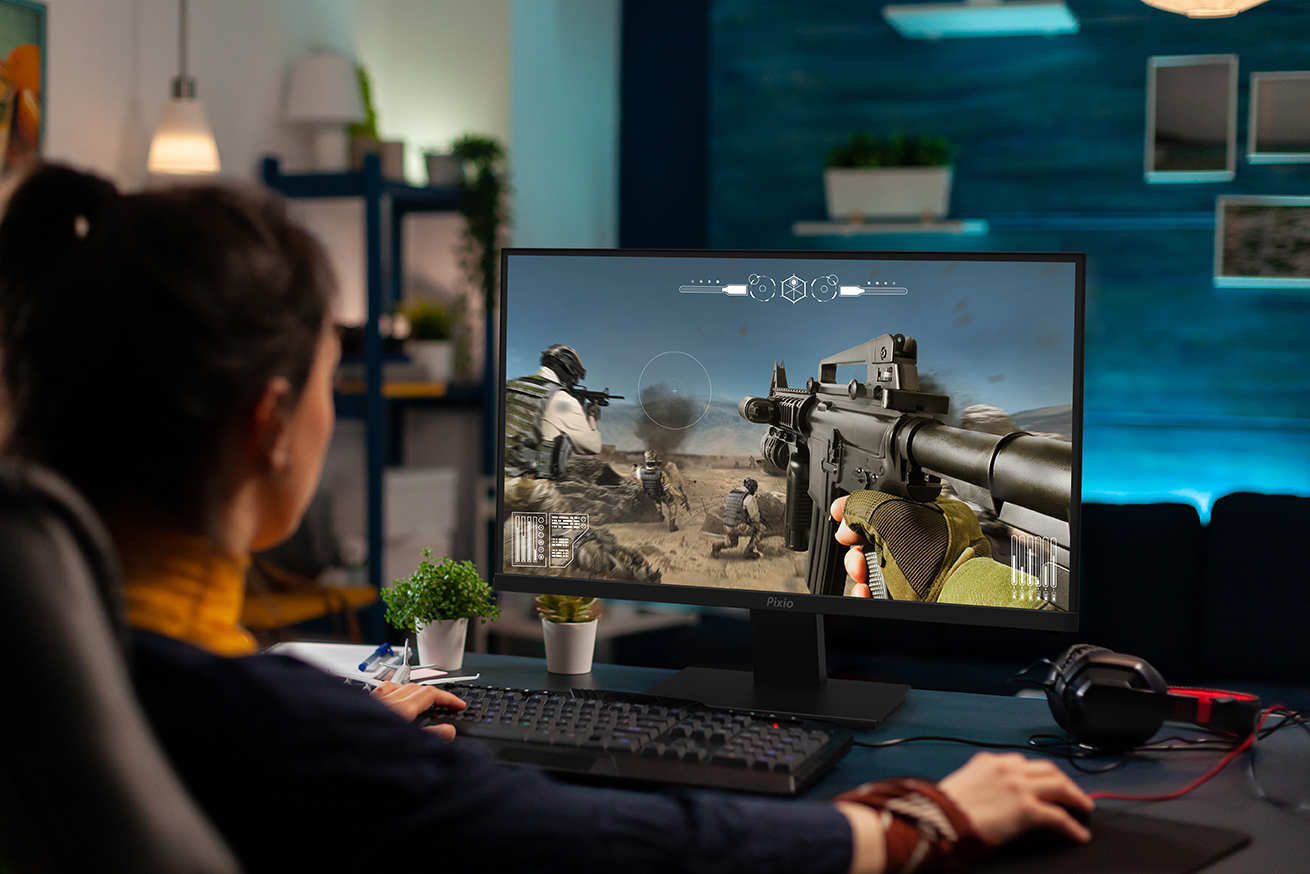Your monitor's panel technology significantly impacts factors like viewing angles, color accuracy, contrast ratio, and response time. This blog post will break down the three main monitor panel technologies: IPS, VA, and TN, helping you decide which one best suits your needs.
- IPS (In-Plane Switching): IPS panels offer excellent viewing angles, meaning the colors and contrast remain consistent even when viewed off-center. This makes them ideal for creative professionals who need accurate color representation from various angles. IPS panels also boast good response times, making them suitable for most everyday tasks and even gaming.

-
VA (Vertical Alignment): VA panels are known for their impressive contrast ratios, delivering deep blacks and excellent image clarity. This makes them perfect for watching movies and enjoying games with dark scenes. However, VA panels typically have narrower viewing angles than IPS, and their response times can be slower, potentially causing ghosting or blurring in fast-paced games.
-
TN (Twisted Nematic): TN panels are the most affordable option among the three. They offer decent picture quality and quick response times, making them a popular choice for competitive gamers who prioritize responsiveness over color accuracy and viewing angles. However, TN panels typically have the weakest contrast ratios and viewing angles, with colors appearing washed out when viewed off-center.
Here's a table summarizing the key characteristics of each panel technology:
|
Feature |
IPS |
VA |
TN |
|
Viewing Angles |
Wide |
Narrow |
Narrow |
|
Color Accuracy |
Good |
Good |
Average |
|
Contrast Ratio |
Moderate |
High |
Low |
|
Response Time |
Good |
Moderate |
Very Fast |
|
Price |
Moderate |
Moderate |
Low |
Choosing the Right Panel for Your Needs
Now that you understand the strengths and weaknesses of each panel technology, let's explore which one might be the best fit for you:
-
For Creatives and Professionals: If color accuracy and wide viewing angles are your top priorities, an IPS panel is the way to go. Whether you're a graphic designer, photographer, or video editor, an IPS panel will ensure you see your work precisely from any angle.
-
For Movie Lovers and Gamers (Especially Casual Gamers): If you prioritize deep blacks, high contrast, and a cinematic viewing experience, a VA panel could be your perfect match. VA panels are excellent for watching movies and enjoying games in dark environments. However, if you're a competitive gamer who needs the fastest response times, a VA panel might not be the ideal choice.
-
For Competitive Gamers: If responsiveness is your main concern, and you're on a tight budget, a TN panel might be a good option. However, be prepared for compromises in terms of viewing angles, color accuracy, and contrast.
Additional factors to consider:
-
Refresh Rate: The refresh rate refers to how many times per second the monitor updates the image. For everyday tasks and casual gaming, a 60Hz refresh rate is sufficient. However, for a smoother gaming experience, especially in fast-paced titles, consider a monitor with a higher refresh rate like 144Hz or even 240Hz.
-
Resolution: The resolution determines how many pixels your monitor has. Higher resolutions offer sharper images but require more powerful graphics cards to run smoothly. Common monitor resolutions include 1080p (1920x1080), 1440p (2560x1440), and 4K (3840x2160).
-
Screen Size: The ideal screen size depends on your personal preference and viewing distance. Most users find 24-27 inches to be a good starting point, but larger screens can be immersive for gaming and creative work.
There's no single best panel technology as it depends on your individual needs and budget. Hopefully, this blog post has equipped you with the knowledge to confidently choose the right monitor panel for you!

0 comments